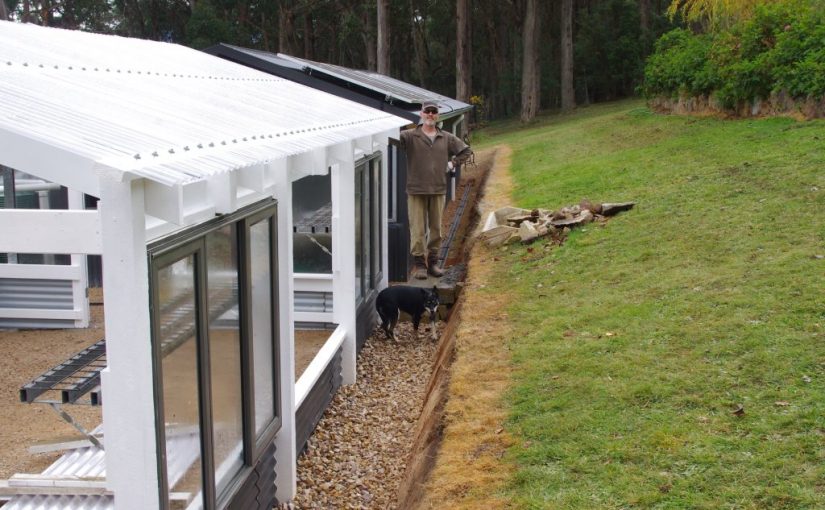The leaf change tourists have been something of an enduring mystery to me. What is a leaf change tourist you ask? Fair question! A leaf change tourist is a person who travels to an area to witness and/or photograph the autumn foliage, often whilst doing unusual things with unusual props. I freely admit that the autumn foliage looks rather pretty. In other countries such folks are known as leaf peepers, which to my ears sounds a bit pervy.
Five years ago, very few people travelled to this mountain range to view the autumn foliage. You may have seen the occasional photo shoot of a bride, slinky dress and all, trying her hardest to disregard the cold autumn breeze, whilst silhouetted against the reds and oranges of the autumn foliage. All very tasteful, but the onslaught of the hordes these days is not tasteful, and frankly I can’t see how people could enjoy the experience.
During one of the strictest lock downs last year where travel was restricted to within 5km (3.1 miles) of the farm, I discovered that the local general store was it, there was no other business selling food. And these days, the business is really busy. Making heaps of mad cash from tourists sounds nice and all, until you have to actually deal with the unrelenting onslaught day after day. I have nothing but respect for the people who work there and their display of stoicism in the face of the unrelenting hordes.
Long term readers will be aware that I make my living via the profession of accounting. The other day I remarked to some friends that the profession can sometimes take the fun out of experiences. After all, when there are more staff than customers in a restaurant, you know the place is losing mad cash. And when I observe the hordes which are the leaf change tourists, it becomes hard to shake the question: How the heck do all these people afford to do this activity?
It’s not just weekends now that the leaf change hordes descend. It’s the weekdays as well. And I see people of all ages. What are their stories, I wonder? Another side benefit of my professional activities is that I hear about businesses experiencing staff shortages. The Great Resignation is real, so I particularly wonder about the working age people who are masquerading as leaf change tourists during weekdays.
The other day I paid $9 for a small bag of oranges at the local supermarket. That sure was expensive. The Great Resignation may be real, but inflation is realerer (if that is even an English word). As I type this, Oil has climbed to US$119 a barrel and the latest news is that wholesale electricity prices are also set to rise. Prices for most stuff, is on the rise. As an interesting observation, off grid electricity is expensive, and from this perspective the average household grid connected cost of around $1,645 seems pretty cheap.
There’s a lot of bad economic news lately. Candidly I’m reminded of the run-up to the Global Financial Crisis of 2008, and it does make me wonder why people aren’t being more prudent. For those who aren’t aware, the average mortgage (i.e. debt on housing) in this country is somewhere between $500,000 and $600,000 (but closer to the upper end of that range). If you pick the half way mark between those two numbers, a bit of quick maths suggests that for every 0.5% increase in interest rates, a household with that average mortgage will have to cough up an extra $230 a month to the bank. It doesn’t sound like much mad cash, until you have to hand it over. And remembering those expensive oranges, something will have to give. Gawd I hope households cut out the leaf change tourism!
Unfortunately, things are never that simple. About 23% of owner occupied lending, and almost triple that for investors, are interest only loans. I read in an amusing book (which probably shouldn’t have been amusing) by the author Michael Lewis, the opinion expressed that an interest only loan is like a rental, but with debt. The risk with these types of loans is that the repayments are cheaper than they’d otherwise be if you were repaying the loan. But at the end of the end of the interest only period, the repayments will go up something around 60%, meaning the borrower might not be able to afford to begin repaying the loan principal – or possibly the bank refuses to provide a further interest only loan at the end of that period of time. This could be a real possibility if house prices decline, which I experienced in the recession of the early to mid 1990’s.
Inertia is the tendency to do nothing or resist changes. After all, as a society we could have been more prudent. We probably should have been more prudent. Momentum however, is the impetus gained by a mass, and a good example of that is that the volume of the leaf change tourists sure has increased over the years. However, inertia and momentum both come with no guarantees as to the future, and I reckon the economics will be what turns back the leaf change mob.
Due to issues I do not wish to discuss, this has been one crazy week. Sandra and I have kept our cool, whilst others caused much drama. But in between the craziness, we took advantage of the sunny weather. Some days here last week were truly stunning and the sun shone and it was pleasant being outside. Just the right thing to combat the effects of crazy people. Work thus continued on the greenhouse project.
A lot of further carpentry work was done, and the unexpectedly strong sun at this time of year allowed us to paint the timber. Supports for the steel sheeting which runs around the base of the greenhouse were installed. Two doors were hung at either end of the shed. And steel racking for seed-raising purposes was installed on two of the windows which face the sunny north.
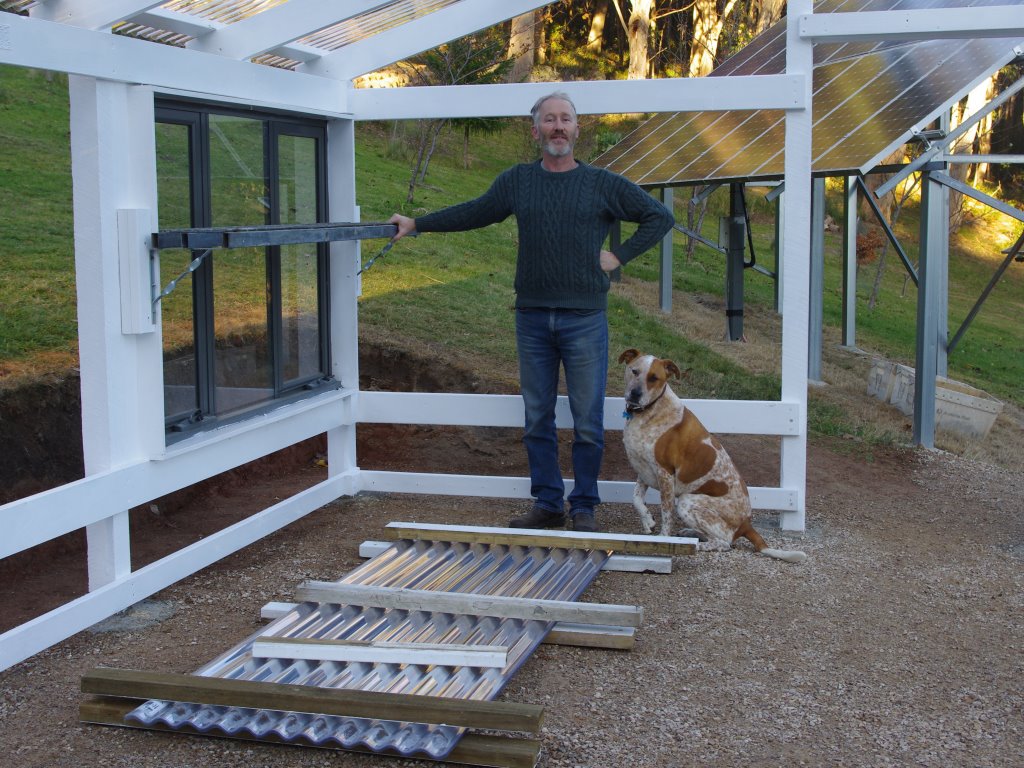
About half of the materials in the greenhouse (and all of the windows, doors and steel sheets) are recycled materials. There are now very few scrap materials left over from the old greenhouse, and the new shed design accommodates the use of these materials.

More work got the steel skirt installed which runs around the base of the greenhouse. The more visible up hill facing sides of the shed received the better looking sheets of corrugated steel. Some of the colour on the cheaper sheets of steel had faded a bit, thus they were still used, but out of sight.

The embankment on the uphill side of the greenhouse was neatened up. The line of clay was a bit wonky and in need of correction.
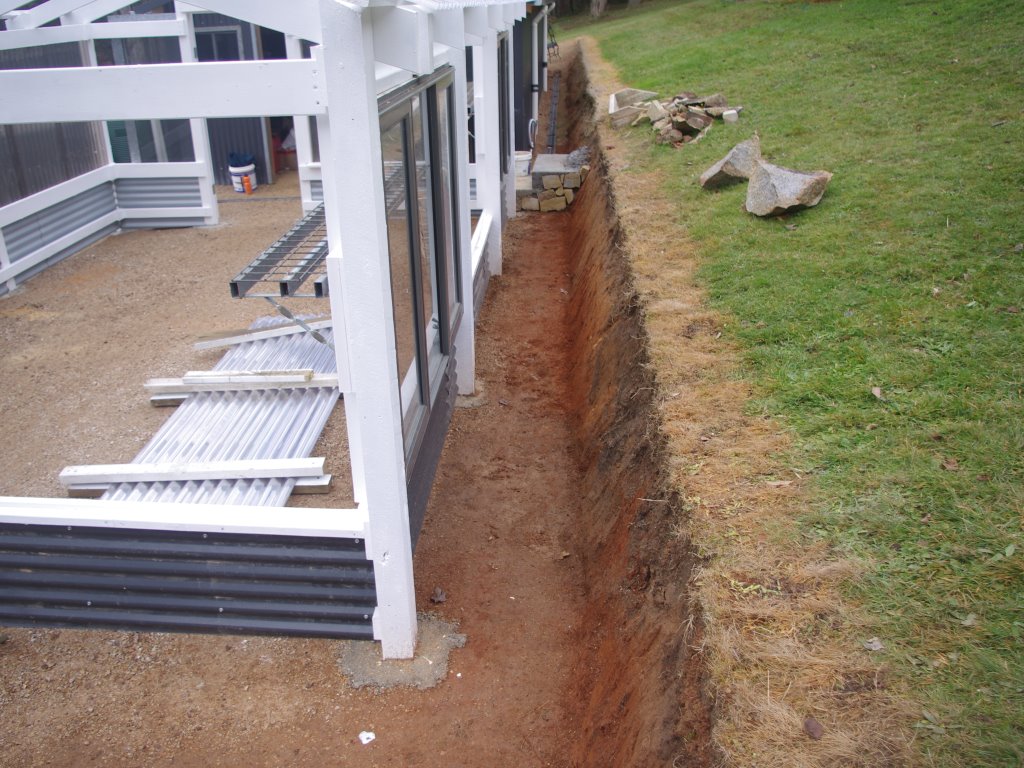
Digging generally provides excess clay / soil, and this stuff is very useful for filling up holes in the paddock. For curious readers the holes ended up in the paddock and orchard because we’d removed rocks. Most people would be unaware that mower blades hitting rocks can create sparks which can easily ignite dry grass. Best to remove the rocks and don’t mow on hot, windy and dry days.
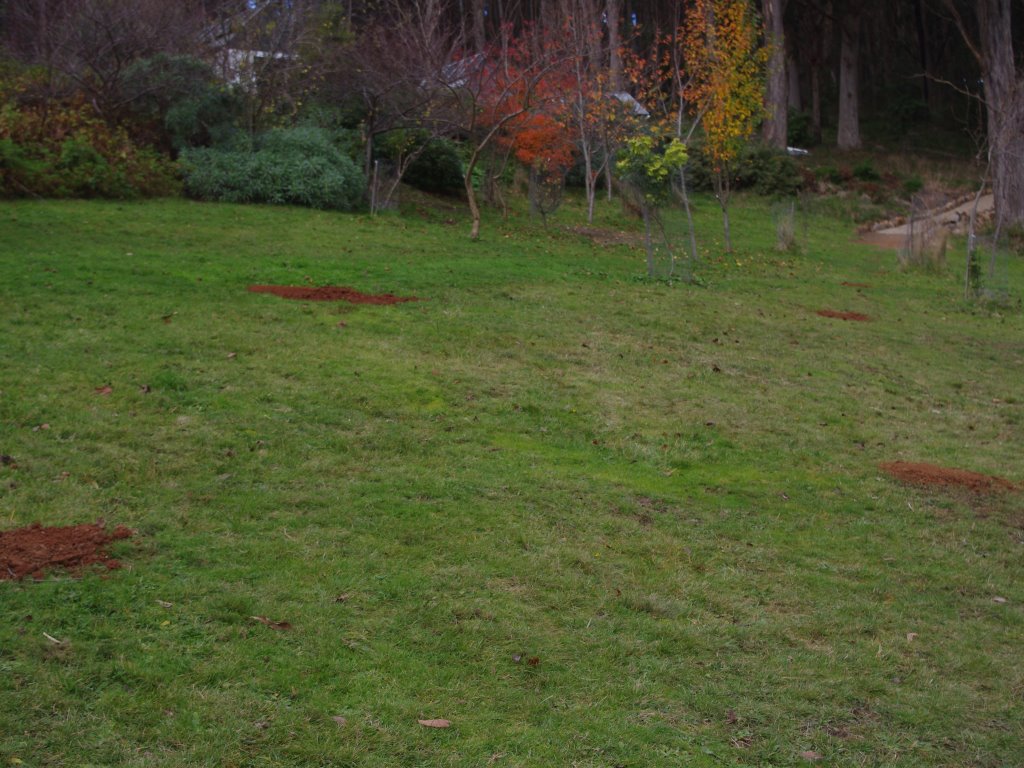
Observant readers will note that the greenhouse roof does not have guttering and / or drains. We’re experimenting with this shed design and allowing rainfall to collect on the roof and then wash down into the soil around the building. There will be permanent raised beds inside the greenhouse and the water in the ground will reduce the need to regularly water these permanent beds.
Unfortunately, concentrating rainfall on a roof and then allowing it to fall to the ground may create serious erosion problems during very heavy storms. To counter this risk, we’re putting down a very thick layer of the lime based crushed rock we normally use. Except that this time the individual crushed rock chunks are almost three times larger than the usual stuff and less likely to wash away in heavy storms. And a bonus will be that lime will slowly wash into the soil along with the rainwater. A win for the plants, and the risk of erosion in serious storms is much reduced.
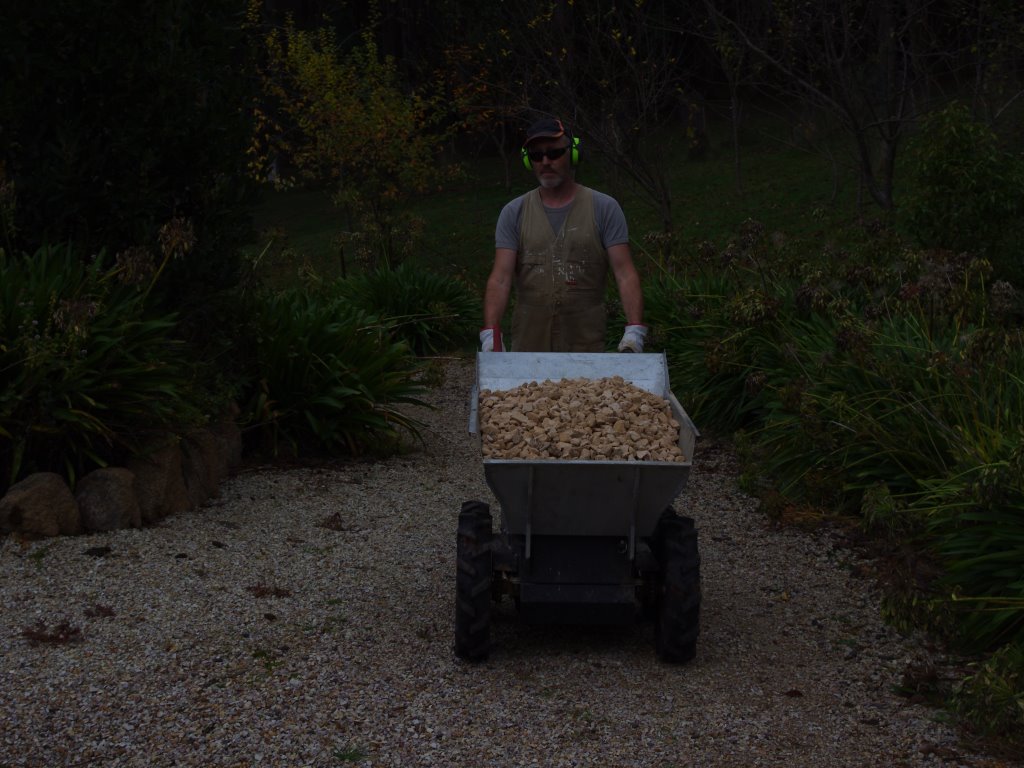
The power wheelbarrow makes light work of moving super heavy loads around the farm. And we were able to tip the contents out of the bucket and near to where the crushed rocks ended up.

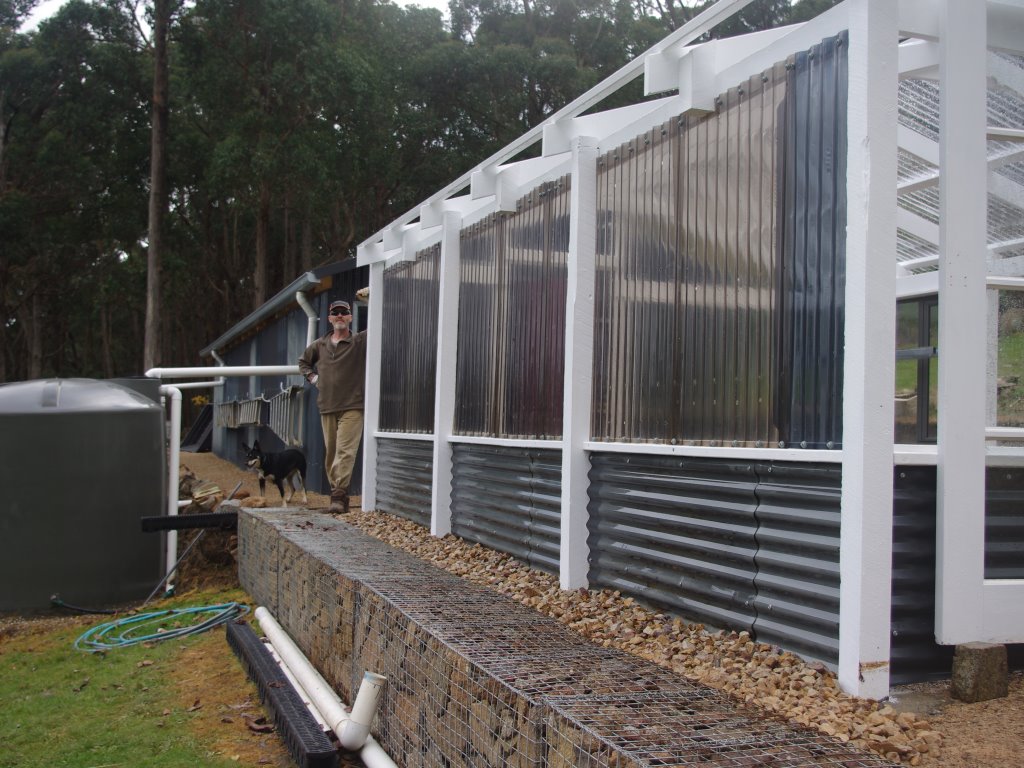
In the above photo you can also see that the polycarbonate from the former greenhouse has been installed and put to use on this downhill side of the shed.
Earlier in the week whilst we had the table saw in use, we used a lot of scrap materials to create hardwood planks for two garden seats which were in need of repair. We scored the seats at the local tip-shop many years ago and these two have always been in need of repair. In the warmer months, it is nice to have places to sit and just enjoy the activities of the local wildlife.
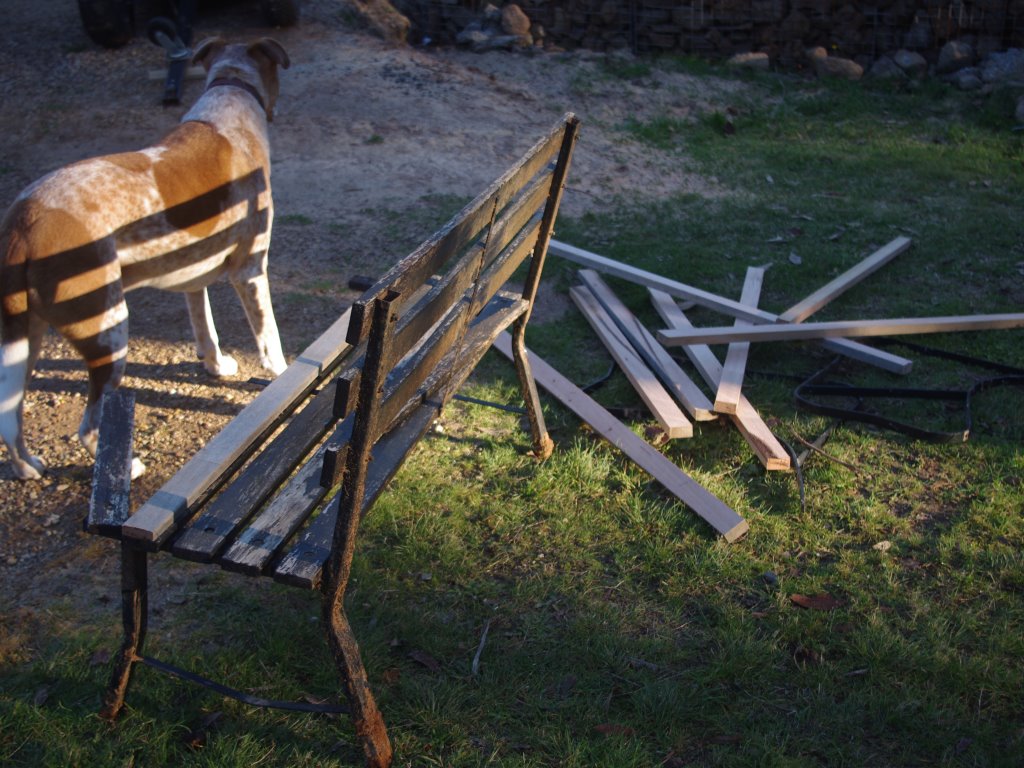
We’ve had most combinations of weather this week:
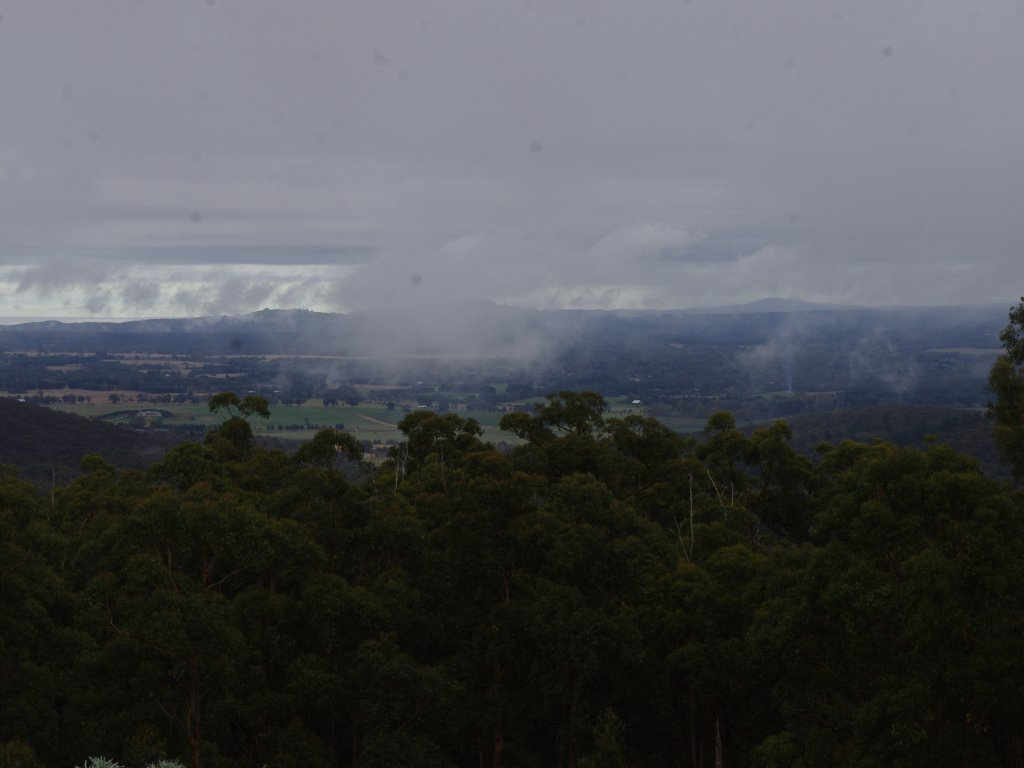
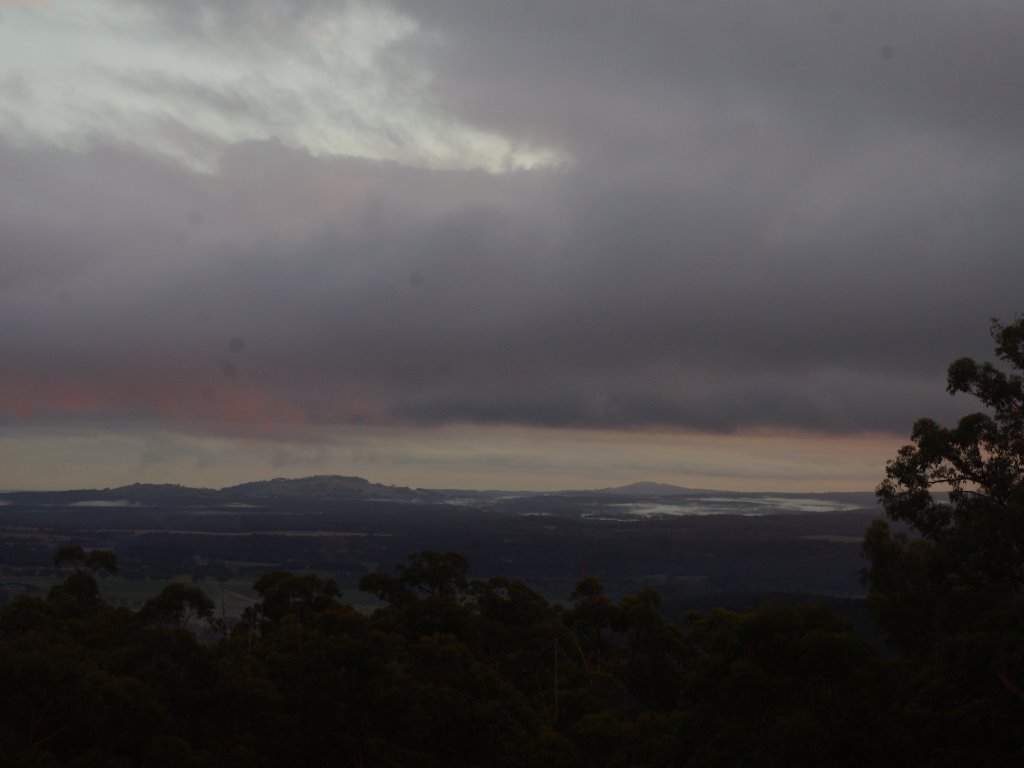
The other day I noticed that the bright green and orange King Parrots had begun to sample the kiwi fruit. I use the birds as an indicator that fruits are nearing their ripening process. There are a huge number of kiwi fruits, so even if the parrots take half of them, there are still more than we can eat or preserve.
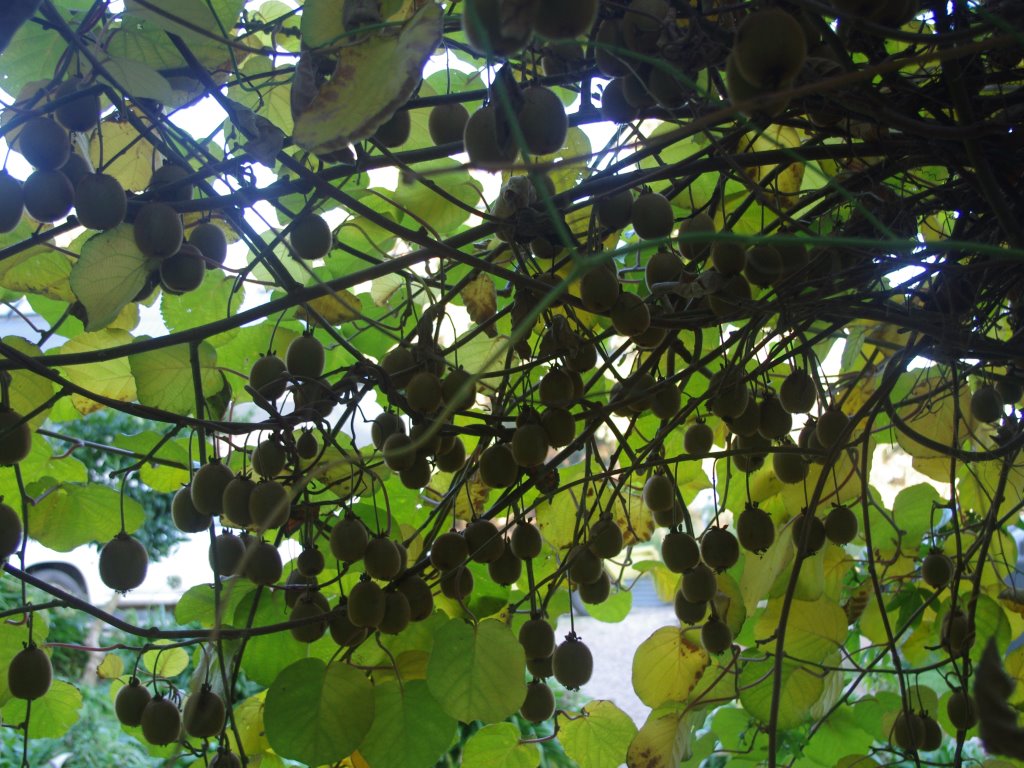
Onto the flowers:
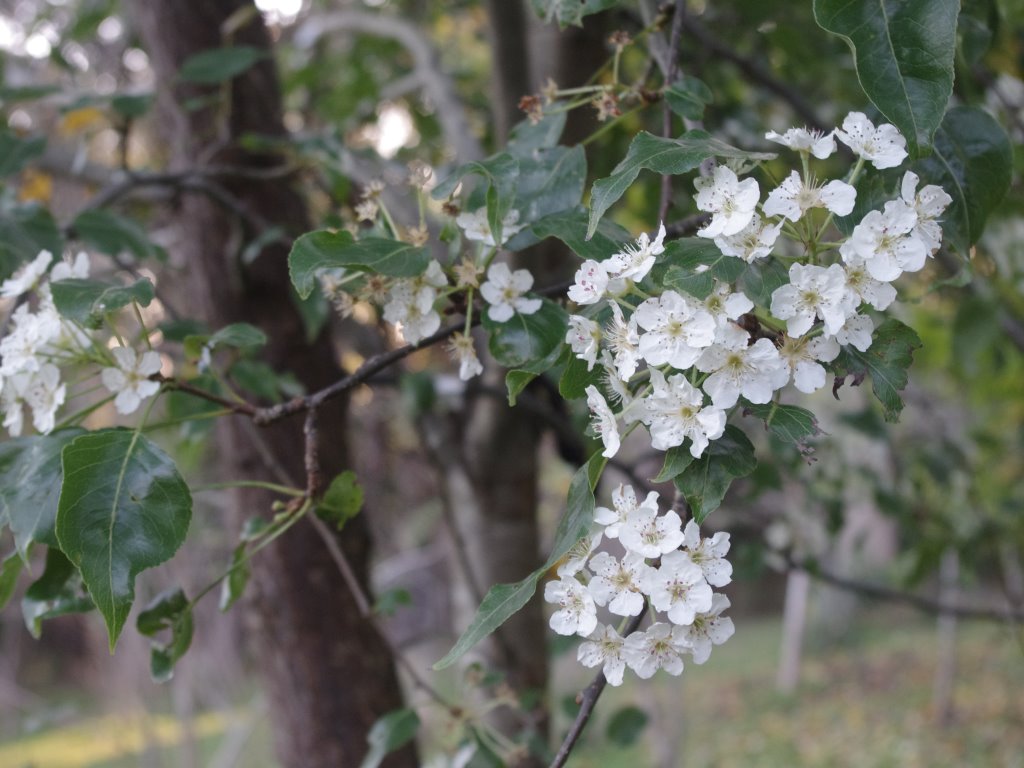

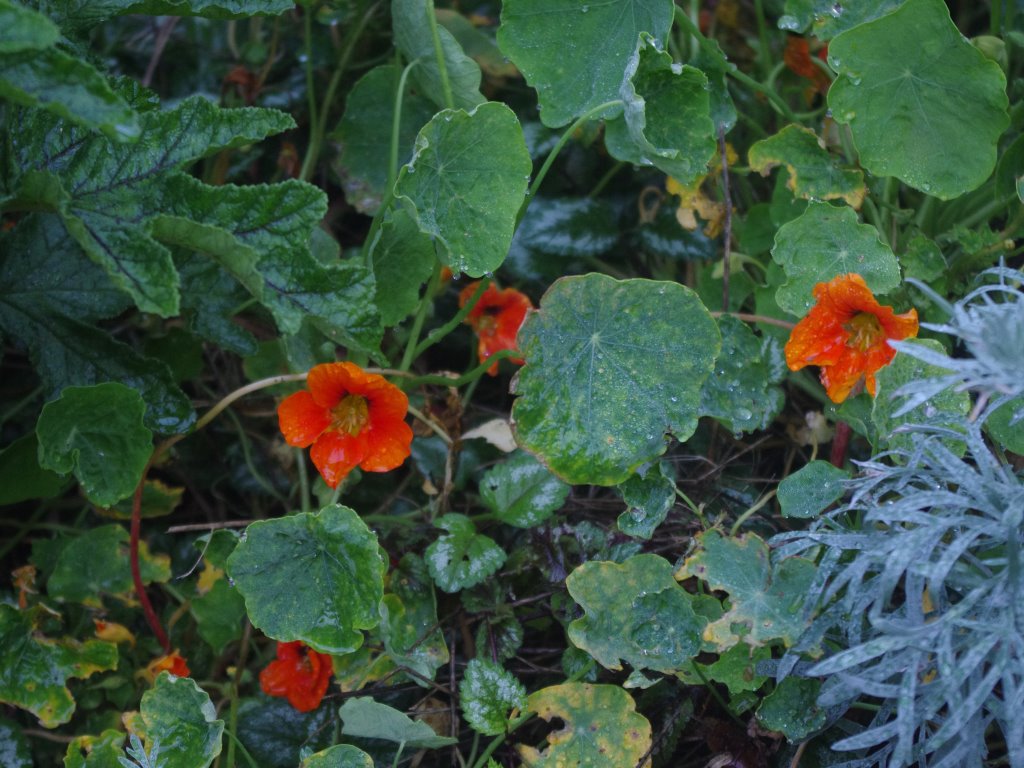
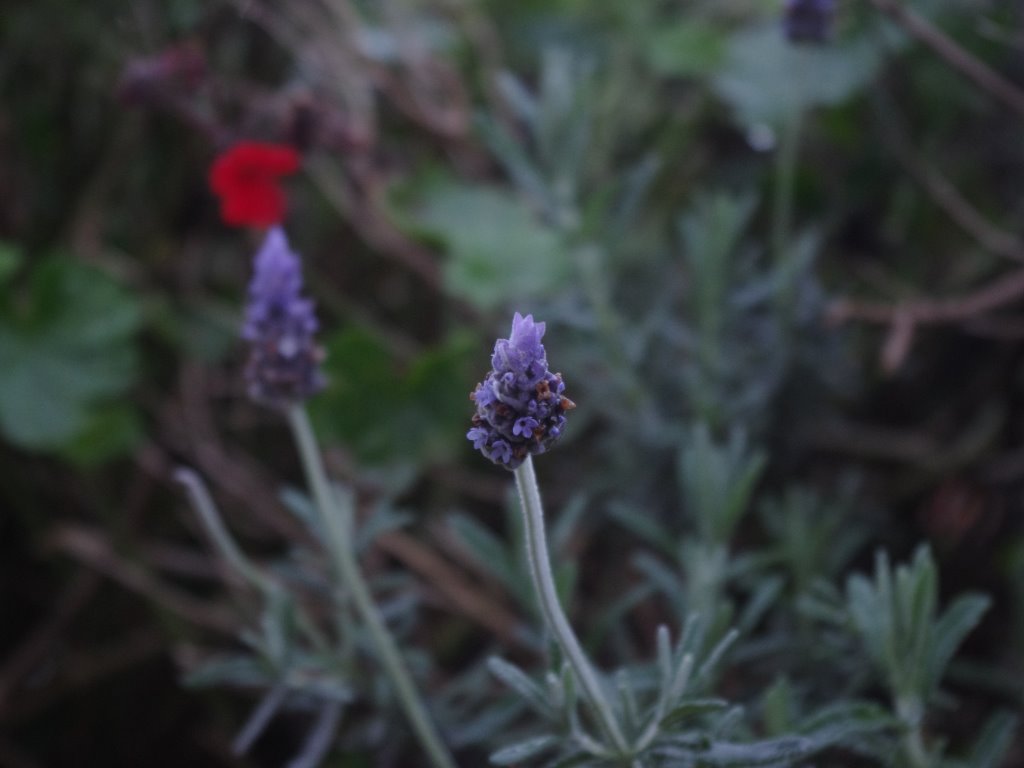
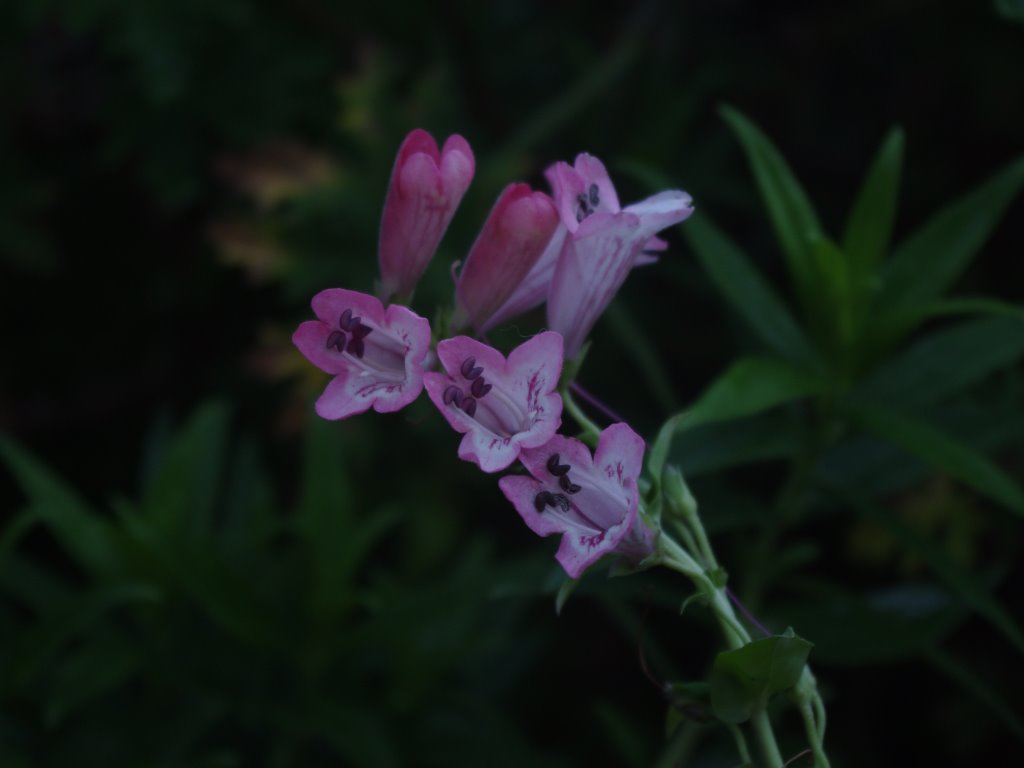

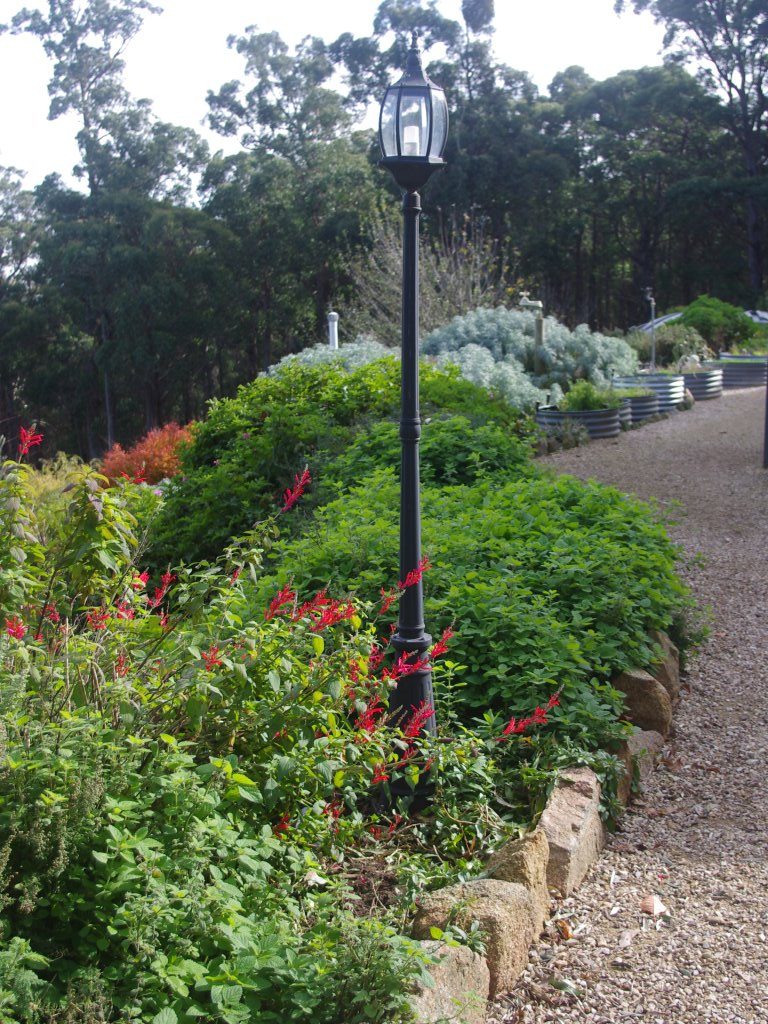
The temperature outside now at about 10.00am is 6’C (43’F). So far this year there has been 392.2mm (15.4 inches) which is up from last weeks total of 384.2mm (15.1 inches)
